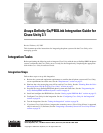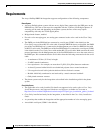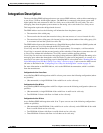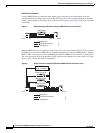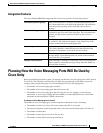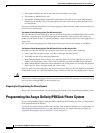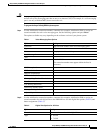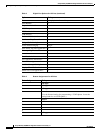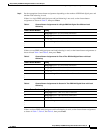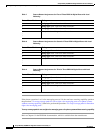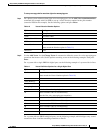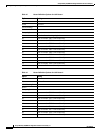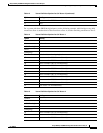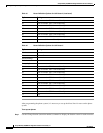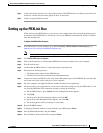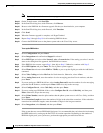
5
Avaya Definity Gx/PBXLink Integration Guide for Cisco Unity 3.1
OL-1846-06
Avaya Definity Gx/PBXLink Integration Guide for Cisco Unity 3.1
Planning How the Voice Messaging Ports Will Be Used by Cisco Unity
Integration Features
The Avaya Definity/PBXLink integration with Cisco Unity provides the following features.
Planning How the Voice Messaging Ports Will Be Used by
Cisco Unity
Before programming the phone system, you need to plan how the voice messaging ports will be used by
Cisco Unity. The following considerations will affect the programming for the phone system (for
example, setting up the hunt group or call forwarding for the voice messaging ports):
• The number of voice messaging ports installed.
• The number of voice messaging ports that will answer calls.
• The number of voice messaging ports that will only dial out, for example, to send message
notification, to set message waiting indicators (MWIs), to make AMIS deliveries, and to make
telephone record and playback (TRAP) connections.
The Number of Voice Messaging Ports to Install
The number of voice messaging ports to install depends on numerous factors, including:
• The number of calls Cisco Unity will answer when call traffic is at its peak.
• The expected length of each message that callers will record and that subscribers will listen to.
• The number of subscribers.
• The number of ports that will be set to dial out only.
• The number of calls made for message notification.
Call forward to personal greeting
When an incoming call is routed to an unanswered extension, the
call is forwarded to the voice mail of the subscriber. The caller then
hears the personal greeting of the subscriber and can leave a
message.
Call forward to busy greeting
When an incoming call is routed to a busy extension, the call is
forwarded to the voice mail of the subscriber. The caller then hears
the busy greeting (if the subscriber enabled it) and can leave a
message.
Caller ID
Cisco Unity receives caller ID information from the phone system
(if available). This information appears in the subject line of the
message in the desktop messaging application.
Easy message access
A subscriber can retrieve messages without entering an ID.
Cisco Unity identifies a subscriber based on the extension from
which the call originated. A password may be required.
Identified subscriber messaging
Cisco Unity automatically identifies a subscriber who leaves a
message during a forwarded internal call, based on the extension
from which the call originated.
Message waiting indication
When a message is waiting for a subscriber, Cisco Unity notifies the
phone system to activate the message waiting indicator (MWI) on
the subscriber extension.



